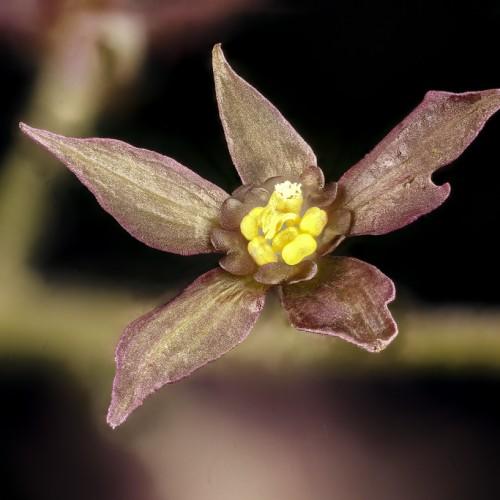
yellowroot
Xanthorhiza simplicissima
Cycle:
Perennial
Watering:
Average
Hardiness Zone:
3 - 9
Flowers:
Flowers
Sun:
Part shade
Growth Rate:
Low
Maintenance:
Low
Drought Tolerant:
Yes
Salt Tolerant:
Yes
Care Level:
Medium
watering
Watering yellowroot is a fairly simple task. It only requires moistening the soil around the plants, rather than drenching or submerging them. Water 2 to 3 times a week in spring and summer and once a week in fall and winter. Make sure the soil is consistently damp but never soggy. You may want to extend the period between waterings during periods of cooler temperatures and rainy weather.
sunlight
Yellowroot, also known as Xanthorhiza simplicissima, is a plant species that prefers full sun to partial shade when it comes to sunlight requirements. While it will tolerate partial shade, yellowroot grows best in soils that receive a minimum of 6 hours of direct sunlight daily. It is especially important for yellowroot to receive sunlight of at least moderate intensity, as too much shade can prevent the plant from producing enough energy to support its growth. Yellowroot can be especially sensitive to direct sunlight during the mid-day hours and should have some shade provided during this time of the day. Additionally, yellowroot should be placed in an area that receives good air circulation; this will help to prevent any potential wilting during hot summer days.
pruning
When it comes to pruning yellowroot (Xanthorhiza simplicissima), it is best to wait until late winter. Pruning should be minimized -- only pieces that are dead, broken, or diseased should be removed. If the plant has become overgrown, you can thin out some of the foliage, however avoid cutting the stems back too far. Cut back any died back foliage just above a pair of healthy buds or branches. If necessary, you can also reduce the overall size of the plant by cutting back the longest stems. Take care not to cut too much, and remember to check for bugs or eggs in the stem crotches before discarding the removed material. Proper pruning will ensure that the plant stays healthy and bushy.
